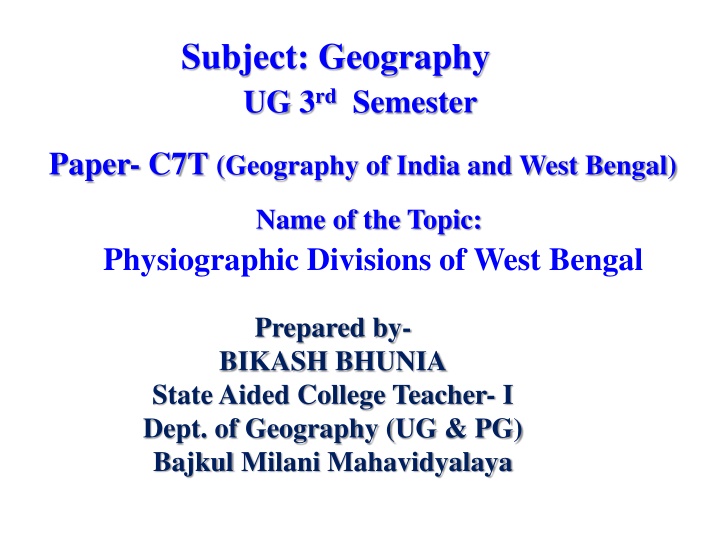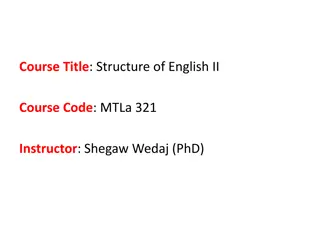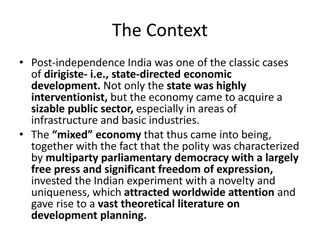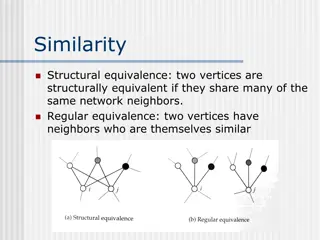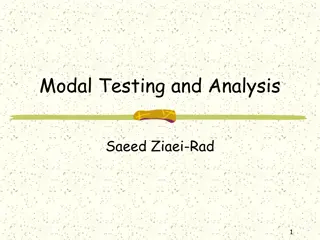Tasks, Production, and Structural Dynamics: Insights into Economic Production
Delve into the intricate dynamics of economic production, exploring production systems, coordination challenges, and structural dynamics. Learn about the foundational principles guiding production processes and the evolution of production theories.
Download Presentation

Please find below an Image/Link to download the presentation.
The content on the website is provided AS IS for your information and personal use only. It may not be sold, licensed, or shared on other websites without obtaining consent from the author.If you encounter any issues during the download, it is possible that the publisher has removed the file from their server.
You are allowed to download the files provided on this website for personal or commercial use, subject to the condition that they are used lawfully. All files are the property of their respective owners.
The content on the website is provided AS IS for your information and personal use only. It may not be sold, licensed, or shared on other websites without obtaining consent from the author.
E N D
Presentation Transcript
Subject: Geography UG 3rd Semester Paper- C7T (Geography of India and West Bengal) Name of the Topic: Physiographic Divisions of West Bengal Prepared by- BIKASH BHUNIA State Aided College Teacher- I Dept. of Geography (UG & PG) Bajkul Milani Mahavidyalaya
Location and extent West Bengal is on the eastern neck of India, stretching from the Himalayas in the north to the Bay of Bengal in the south. It lies between 85 degree 50 minutes and 89 degree 50 minutes east longitude, and 21 degrees 25 minutes and 27 degrees 13 minutes north latitude. The state has a total area of 88,752 square kilometers (34,267 sq mi). With Bangladesh on its eastern border, the state forms the ethno-linguistic region of Bengal. To its northeast lie the states of Assam and Sikkim and the country of Bhutan. To its southwest is the state of Odisha. To the west, it borders the states of Jharkhand and Bihar, and to the northwest, Nepal. The capital of the state is Kolkata, the third- largest urban agglomeration and the seventh-largest city in India.
Physiographic Division On the basis of these features, West Bengal may be divided into seven physical regions: The Northern Mountain Region The Western Plateau Fringe The Plains The Northern Plains The Southern Plains Tarai Region Rarh Region The Sunderban Delta The Coastal Fringe
The Northern Mountain Region The northern mountain region is situated on the north-western part of West Bengal and belongs to the Eastern Himalayan range. This region covers the whole of the Darjeeling district except the Siliguri division and some parts of the Jalpaiguri district. This region consists of sedimentary and metamorphic rocks. This northern part is faced with rising mountain ranges in the Himalaya and downslope to hills on the border of Jalpaiguri district, the hills may fire to rolling humid plains known as Duars . Teesta river divided this region into western and eastern parts. Most of the highest mountain ranges are seen in the western part of the Teesta river. Sandakphu (3630 mt), Phalut (3595 mt), Tonglu (3036 mt). The eastern part of the Teesta River is lower than the western part of the Teesta river. The famous Kalimpong town is situated in this region. Few hills are also found in the Dooars region at the foot of the Himalayas. Some remnants of the Siwaliks mountain ranges can be seen in the Jalpaiguri district where they are known as the Buxa-Jayanti Hills.
Tarai Region The Tarai (moist land) is a belt of marshy grasslands, savannas, and forests at the base of the Himalaya range stretching southwards to about 38 km. This region extends to the Siliguri division of Darjeeling district, the north and eastern part of Jalpaiguri, and the northern part of Dinajpur. The Teesta has divided the area into two parts- the western part is known as the Tarai whereas the eastern part is known as the Dooars or Duars.
Plains Except for the northern hilly mountainous and western plateau area, the remaining is the Plain area. North Bengal plain starts from the south of the Terai region and continues up to the left bank of the Ganges. Ganga River flows from west to east and divides the plain into the northern and southern parts. This plain is formed mainly by the alluvium of the Ganga River and its branches. The narrow landmass in North Dinajpur district which is known as Mahananda Corridor runs from north to south direction and joins Maldah with the plains of Jalpaiguri and Koch Bihar.
Mahananda River divides the district of Maldah into eastern and western parts. The eastern part known as Barind or Barendrabhumi consists of an undulating plain and is made of old alluvium which is a part of the Ganges delta. The western part, on the other hand, is made of new alluvium and in this section, River Kalindi meets with the Mahananda River. The part of Maldah lying to the north of river Kalindri is known as tal. This is lowland and covered with swamps and beels (small water bodies) whereas the area the south of the Kalindi is very fertile land and is known as diara. The western plain has been largely built up by the silt brought by the western tributaries of the Bhagirathi
The Western Plateau Fringe This region is situated in the western part of West Bengal. This plateau region connecting the Rajmahal hills of Bihar and Chotanagpur plateau is the part of Chotanagpur plateau. This region is made of old igneous rock granite and gneiss of the Archaean era as well as coal-bearing mudstone and quartzite rocks of the Carboniferous period. Puruliya district (100 meters) has the highest mountain Ayodhya hill (677 meters) in this region. Because of long and continuous erosion, the whole region has been transformed into an undulating peneplain interspersed by small monadnocks locally known as tila.
Rarh Region This region intervenes between the southern Ganges delta and the western plateau region. Rarh region extends from north to south between 50 meters contour in the east and 100- meter contour in the west. This region constitutes the districts of Birbhum, Barddhaman, Bankura, Murshidabad, and Medinipur. This region is believed to be created from the soil from the Deccan plateau. This region is dominated by laterite soil.
Sundarban Delta The Sundarbans delta is the largest mangrove forest in the world. Sundari trees are found in abundance in this region and hence known as Sundarban . It consists of the Hoogly river estuary and newly created Ganga delta characterized by tidal creeks, mud floods, and newly formed islands. Mangrove Forest is listed in the UNESCO world heritage list separately as the Sundarbans and Sundarbans National Park respectively. This area has been created by the deposition of silt by its numerous rivers namely, Hoogly, Matla, Jamira, Gosaba, Saptamukhi, Haribhanga river, and their tributaries. The most famous among these is the Royal Bengal Tiger, but numerous species of birds, spotted deer, crocodiles, and snakes also inhabit it. It is estimated that there are now 400 Bengal tigers and about 30,000 spotted deer in the area.
Coastal Region The coastal plain region is on the extreme south of the state. Part of the district of Purba Medinipur along the Bay of Bengal constitutes the coastal fringe. The beach at Digha in this region is a fast developing sea resort and becoming an important tourist spot. This emergent coastal plain is made up of sand and mud deposited by rivers as well as wind.
